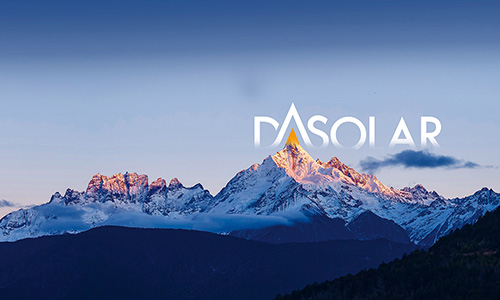27.77% and Rising: DAS Solar Sets New Benchmark with DBC 3.0 Plus Innovation
2025-09-30
As the global energy transition accelerates and carbon neutrality targets become increasingly urgent, solar technology continues to stand at the forefront of clean energy innovation. Through continuous R&D and a clear focus on innovation, DAS Solar has advanced its proprietary DAON-BC (DBC) cell technology from DBC 1.0 to DBC 3.0 Plus, consistently pushing efficiency boundaries and setting new benchmarks for the PV industry.
With ongoing technological progress, the integration of back-contact (BC) cell structures with other high-efficiency technologies is becoming a major trend. These hybrid approaches combine the benefits of advanced passivation schemes, delivering higher efficiencies and stronger competitiveness across diversified applications. According to the China Photovoltaic Industry Association, in 2024, N-type TOPCon cells accounted for 71.1% of the market, becoming the dominant technology, while N-type XBC cells grew rapidly from 0.9% in 2023 to 5.0% in 2024, highlighting their rising potential.
Since its founding, DAS Solar has strategically pursued its "One Core, Three Branches" roadmap. With TOPCon passivated contact technology as the core, supported by advanced SiO₂/Poly-Si passivation, the company has built a comprehensive technology portfolio covering TOPCon, DBC, TSiP, and SFOS. This diversified R&D strategy not only supports current mainstream technologies but also anticipates future breakthroughs, with the long-term goal of pushing solar cell efficiency toward 40%.
DAS Solar began BC cell development in 2020, introducing a high carrier-selectivity passivated contact structure based on SiO₂/Poly-Si TOPCon. This innovation provided both surface passivation and efficient carrier collection, laying the technical foundation for high-efficiency DBC cells by improving carrier transport and minimizing energy loss.
Today, DBC technology has entered the DBC 3.0 Plus era, leveraging TOPCon 5.0 tunneling layer technology with a fully passivated selective contact design. The result is a certified cell efficiency of 27.77%, module power above 670W, and module efficiency of 24.8%. Crucially, DBC 3.0 Plus is compatible with existing TOPCon 5.0 production lines, enabling manufacturers to adopt BC technology without significant equipment overhauls. This dramatically lowers the cost of transition and supports a phased expansion strategy.
DAS Solar's latest DBC platform integrates five key innovations that enhance efficiency and reliability. High-precision laser patterning reduces shading losses and improves carrier transport; embedded diode design strengthens hot-spot resistance and ensures stable power output; a composite passivation film enables full-area P/N passivation, cutting recombination losses; 0BB interconnection reduces silver consumption while optimizing material-to-cell matching, boosting cost-effectiveness; and black silicon surface texturing enhances UV resistance while improving light absorption, ensuring strong performance even in low-light conditions. Collectively, these breakthroughs elevate DBC from a laboratory achievement to a technology ready for large-scale commercialization.
Beyond technical performance, DBC also demonstrates strong adaptability across diverse applications. Its stability and corrosion resistance ensure long-term reliability in floating solar projects; its high efficiency and design flexibility support deployment in urban rooftops and complex architectural environments; and its low environmental impact makes it a sustainable option for ecological projects.
With unmatched efficiency, proven reliability, and broad application potential, DAS Solar's DBC technology delivers a comprehensive solution that combines innovation with practical scalability. Looking ahead, the company will continue to push the boundaries of PV technology, driving new advances that contribute directly to the global energy transition and the achievement of carbon neutrality targets.







 浙公网安备33080302000236
浙公网安备33080302000236